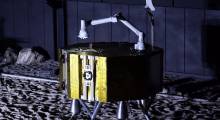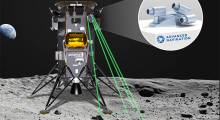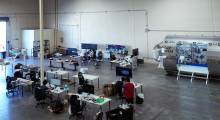GITAI USA Inc., a leading space robotics startup, has been selected to the Defense Advanced Research Projects Agency’s (DARPA) 10-Year Lunar Architecture (LunA-10) capability study, a pivotal initiative aimed at developing foundational technology concepts that move toward a series of shareable, scalable systems that interoperate and optimize lunar infrastructure.
With its inclusion in the program, GITAI is poised to play a crucial role in advancing commercial lunar exploration over the next decade. GITAI’s winning proposal revolves around a concept for the deployment of modular, multi-purpose Inchworm robots equipped with tool-changeable end effectors to conduct lunar surface labor. The robots are designed to handle various tasks, from construction to maintenance and adaptation, without unnecessary duplication.
This groundbreaking approach aligns with the LunA-10 program’s vision for a framework that enables efficient, scalable, and sustainable commercial lunar activities. “We’re both humbled and thrilled to be chosen for DARPA’s LunA-10 program,” said Sho Nakanose, founder & CEO of GITAI. “This mission goes well beyond robotics—it’s about forging a new era of lunar infrastructure. Our innovative approach, leveraging modular robotics, is a catalyst for reshaping how we envision the moon.”
GITAI emphasizes the importance of considering infrastructure and labor together from the architecture level, ensuring co-optimal solutions. By focusing on multi-purpose robotics and collaboration with other LunA-10 team members, GITAI intends to pioneer a transformative approach to lunar development.
Expanding GITAI’s space robotics portfolio, the company is set to launch the ‘GITAI S2’ to the ISS in early 2024, a robot technologically akin to the Inchworm robot. GITAI imagines a future in which its robots act as versatile nodes to enhance, streamline, and combine activities on the moon. Through a Robotics-as-a-Service (RaaS) model, GITAI plans to allow users to realize their lunar ambitions without intricate planning or upfront investments.
Looking ahead, GITAI is committed to achieving total life-cycle optimization in lunar infrastructure development. The company is eager to define the future lunar critical mass point from a labor perspective, ensuring maximum efficiency of multi-purpose robotics in lunar infrastructure tasks.
With this win, GITAI solidifies its position as a driving force in the space industry, representing a significant leap toward a thriving lunar economy, one of the ultimate goals of DARPA’s LunA-10 study.
Watch this video to see the GITAI robots in action.
Article topics
Email Sign Up















